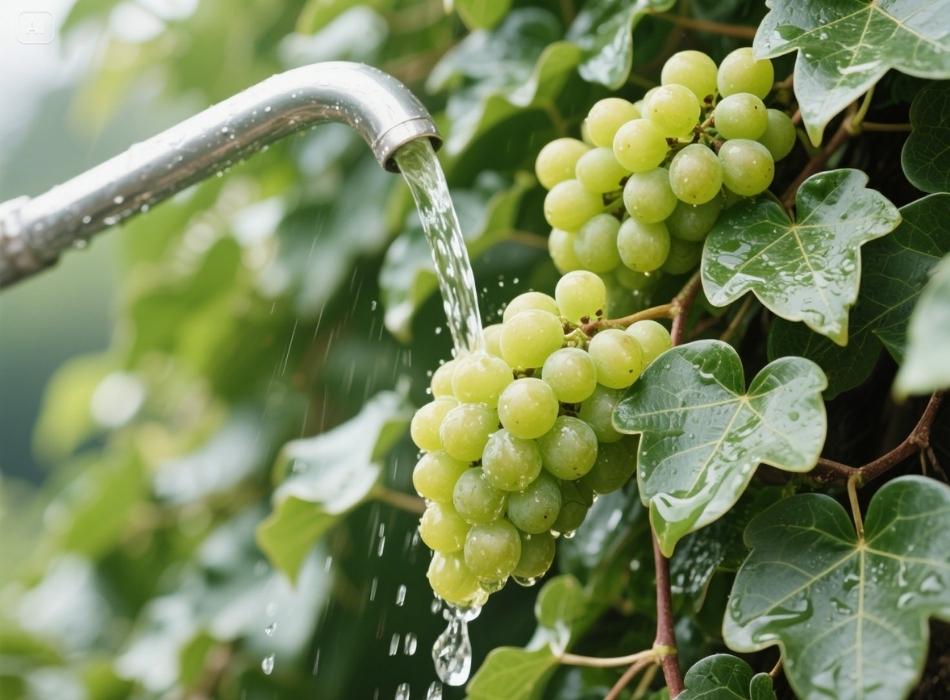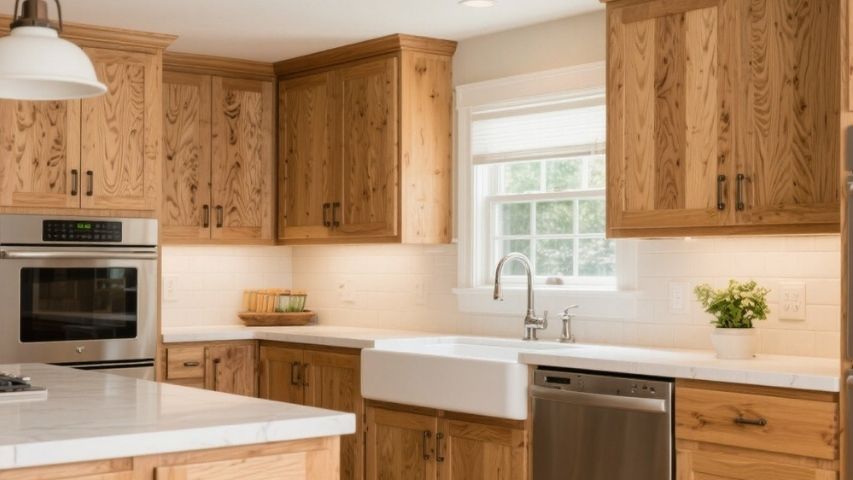Grape ivy (Cissus rhombifolia) is a beloved houseplant known for its lush, trailing vines and easy-going nature. It’s perfect for those looking to add greenery to their home without taking on a high-maintenance plant. However, like all plants, grape ivy has specific care requirements to thrive, and proper watering is the most critical factor.
If you’re wondering how much water is ideal for your grape ivy, you’ve come to the right place. This guide will explain how to water your plant correctly, what factors influence its water needs, and the signs of overwatering and underwatering. By the end of this article, you’ll have all the knowledge you need to keep your grape ivy looking vibrant and healthy.
Why Proper Watering is Essential for Grape Ivy
Watering is one of the most crucial aspects of plant care, and grape ivy is no exception. Water affects nearly every biological process in plants, including photosynthesis, nutrient absorption, and cellular growth. Overwatering or underwatering your grape ivy can disrupt these processes, leading to symptoms like yellowing leaves, wilting, or even root rot.
The key to healthy grape ivy lies in balance. This plant thrives when watered correctly, aligning its moisture levels with its native tropical environment. Proper watering not only promotes vigorous growth but also helps your plant resist pests and diseases.
How Much Water Does a Grape Ivy Need?
Grape ivy doesn’t have an exact, universal watering schedule because its needs vary depending on factors like light, temperature, and the potting medium. However, a general rule is to keep the soil consistently moist without letting it become waterlogged.
Step-by-Step Guide to Watering Grape Ivy:
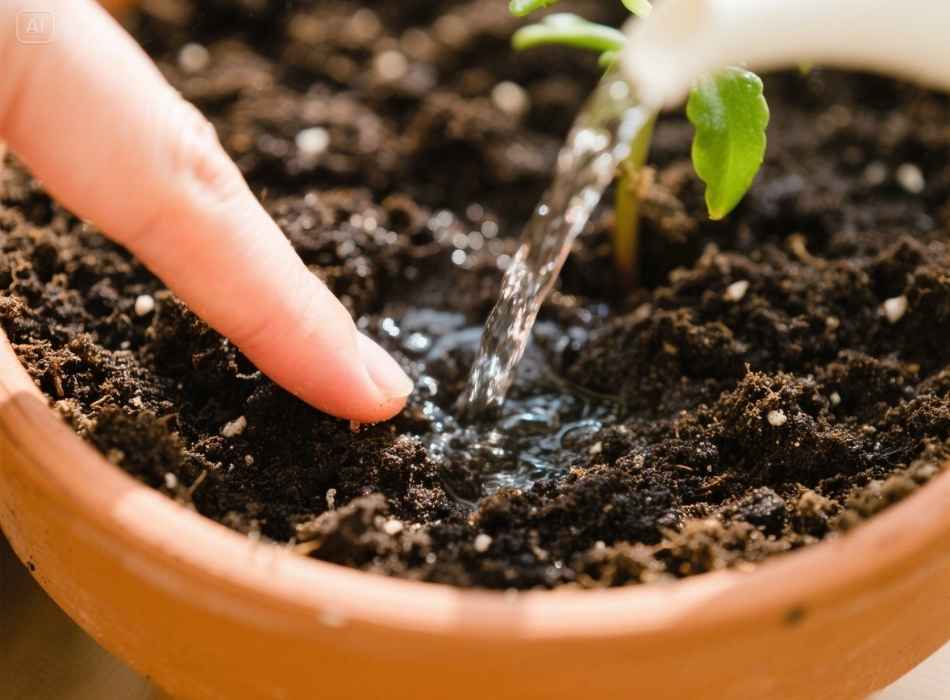
- Check the Soil Moisture:
Before watering, test the top inch of the soil with your finger. It should feel dry to the touch before you add water. If the soil feels moist, hold off on watering for a day or two.
- Watering Method:
When it’s time to water, pour water slowly and evenly around the base of the plant until it begins to drain from the bottom. This ensures the water reaches the entire root system. Discard any excess water from the saucer to avoid letting your plant sit in standing water.
- Frequency:
Generally, watering once a week works for most grape ivy plants. However, this can vary based on environmental factors like the season and indoor conditions. You’ll likely need to water more frequently during hot, dry summers and less often in winter.
- Water Quality:
Grape ivy isn’t too fussy, but it does appreciate room-temperature water with minimal chemicals. If you’re using tap water, consider letting it sit out overnight to allow chlorine to dissipate. You can also use filtered or distilled water.
- Soil:
A well-draining soil mix is ideal for grape ivy, as it doesn’t like to sit in soggy conditions. A mixture of potting soil, perlite, and peat moss is a good option. Avoid using heavy garden soils or those with high clay levels, which can suffocate the plant’s roots.
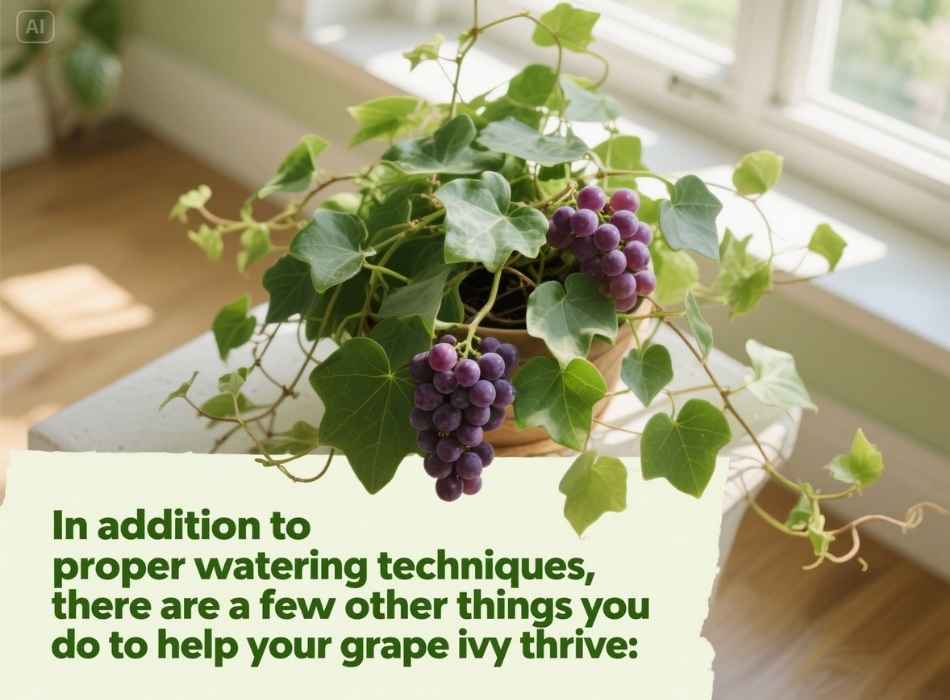
In addition to proper watering techniques, there are a few other things you can do to help your grape ivy thrive:
- Lighting:Lighting: Grape ivy prefers bright, indirect light, but can tolerate lower light levels. However, if placed in low light for an extended period, the plant may become leggy and weak. It’s best to put your grape ivy near a window that receives filtered sunlight throughout the day.
- Fertilizing: Grape ivy is not a heavy feeder, but occasional fertilization can help promote growth and keep the plant healthy. You can use a balanced liquid fertilizer once every two weeks during the growing season (spring and summer) and reduce frequency in fall and winter.
- Pruning: Regular pruning will help keep your grape ivy looking full and bushy. You can trim back any long or straggly stems to encourage new growth. Pruning also helps prevent pests and diseases by improving air circulation around the plant.
Factors That Affect Grape Ivy’s Watering Needs
1. Light Conditions:
Grape ivy thrives in bright, indirect light. If your plant is in a spot with more intense light, it will dry out faster and require more frequent watering. Conversely, lower light will slow growth and reduce the need for water.

2. Temperature and Humidity:
Grape ivy mimics its tropical roots and enjoys warm, humid conditions. During warmer months or in dry indoor environments (like homes with central heating), you’ll need to water more often. Supplementing with a humidifier or misting the leaves can also help maintain the proper balance without over-soaking the soil.
3. Potting Medium and Drainage:
A well-draining potting mix is essential to prevent water from sitting around the roots, which can lead to root rot. Look for a blend that’s rich in organic matter but also includes ingredients like perlite or sand for better drainage.
4. Seasonal Changes:
During spring and summer, grape ivy enters its active growing phase and requires more water to fuel its growth. Conversely, fall and winter mark a period of dormancy when your plant will need less water to stay healthy.
5. Container Size and Material:
Large pots retain water longer than smaller ones, so adjust your watering frequency accordingly. Additionally, pots made of porous materials like terracotta will wick moisture away from the soil faster than plastic containers. If using terracotta pots, be sure to monitor the soil moisture levels more closely and water as needed.
Types of Pots:
There are various types of pots available for growing grape ivy, each with its benefits and drawbacks. Here are some standard options:
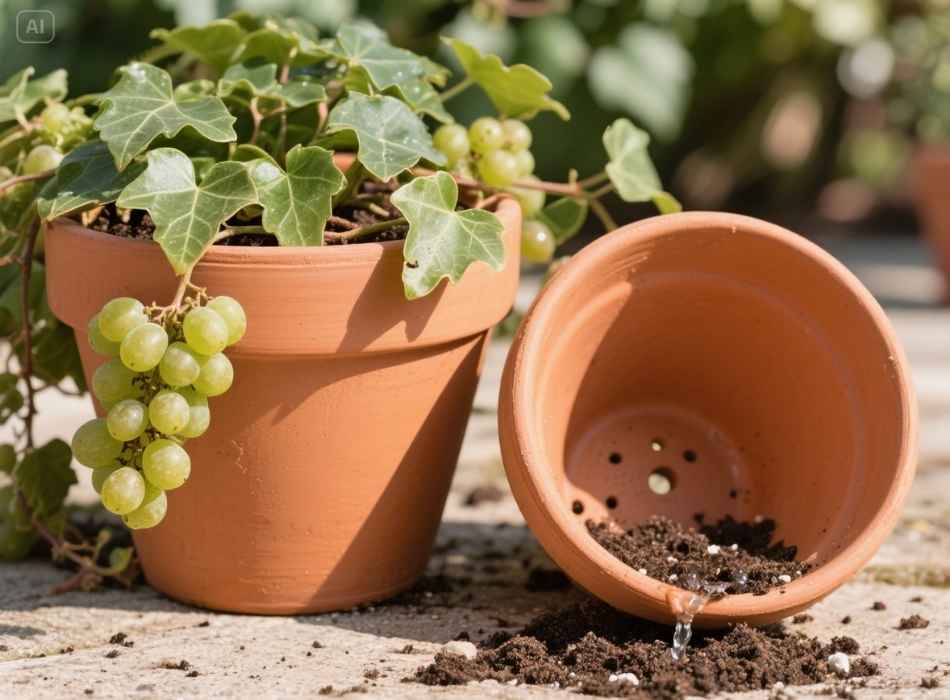
- Terracotta Pots: These clay pots have excellent drainage and are great for plants that require well-draining soil, like grape ivy. However, they can dry out quickly, so regular watering is necessary.
- Plastic Pots: Plastic containers retain moisture better than terracotta but can be prone to root rot if overwatered. They also come in a variety of sizes and colors.
- Hanging Baskets: These are ideal for growing grape ivy indoors as they allow the plant to cascade down, creating a beautiful display. However, make sure to choose one with good drainage holes.
- Ceramic Pots: These pots are not as porous as terracotta but still have good drainage. They come in various designs and add a decorative touch to any space.
Signs Your Grape Ivy Needs More or Less Water
Understanding what your plant is trying to tell you is half the battle. Here are some common signs to watch for:
Overwatering Symptoms:
- Yellowing or browning leaves
- Mushy stems
- Moldy or sour-smelling soil
- Root rot (if detected early, repotting can save your plant)
Underwatering Symptoms:
- Wilting or drooping leaves
- Crispy, dry leaf edges or tips
- Soil is pulling away from the sides of the pot.
If you notice either of these symptoms, don’t panic. Adjust your watering habits accordingly, and your grape ivy will likely bounce back.
Pro Tips for Keeping Your Grape Ivy Happy

- Use a Moisture Meter:
If you’re unsure how moist your plant’s soil is, a moisture meter can eliminate the guesswork. It’s an inexpensive tool that can help ensure you’re watering just the right amount.
- Choose the Right Spot:
Place your grape ivy in a part of your home where light and airflow align with its needs. Too much light can dry it out, while poor ventilation can encourage mold or pests.
- Schedule Routine Checks:
Build a habit of checking on your grape ivy every week. This ensures you catch any watering issues before they cause lasting damage.
- Group Plants Together:
If your home is dry, grouping your grape ivy with other houseplants can create a micro-humid environment, keeping your plants healthier and happier.
- Don’t Overthink It:
While it’s good to be informed, don’t stress too much about being perfect. Grape ivy is a forgiving plant and will usually thrive with consistent care and attention. Pay attention to your plant’s needs, but don’t fret too much if you make a mistake or two.
- Pest Prevention and Control:
Grape ivy is generally not prone to pests, but occasionally aphids, spider mites, and mealybugs may become an issue. Regularly check the undersides of leaves for any signs of infestation. If caught early, these pests can usually be removed with a simple spray of water or by wiping the leaves down with a mild soapy solution.
- Repotting:
Grape ivy does well in slightly cramped conditions, so repotting is only necessary when roots start to grow out of the drainage holes. To prevent overwatering, use a well-draining potting mix and a container with good drainage.
- Training and Pruning:
Grape ivy can be trained to grow up a trellis or allowed to trail down from a hanging basket. To keep its shape, prune back any long or straggly stems at the beginning of spring before new growth starts.
- Fertilizing:
- Propagation:
Grape ivy can easily be propagated through stem cuttings. Take 4-6 inch stem cuttings with at least two leaves and place them in a jar of water. Keep the jar in a warm, sunny spot and change the water every few days. Once roots start to form, you can transfer the cutting to a pot with soil.
- Common Pests and Diseases:
Grape ivy is generally not prone to pests or diseases, but some common ones that may affect it include mealybugs, spider mites, and powdery mildew. Regularly inspect your plant for any signs of these pests or diseases and treat accordingly using organic methods if possible.
Nurture Growth in Your Grape Ivy
Watering isn’t just about keeping a plant alive; it’s about helping it thrive. With the proper watering techniques and conditions outlined in this guide, your grape ivy will reward you with full, vibrant foliage that instantly elevates your space.
Remember, every plant owner’s setup is unique, so don’t be afraid to adjust your approach as you observe how your plant reacts. A little trial and error goes a long way.
If you’re interested in exploring more houseplant care tips or if you’d like personalized advice for specific plants, check out our other gardening resources. Here’s to lush, thriving grape ivy and a more vibrant home.







